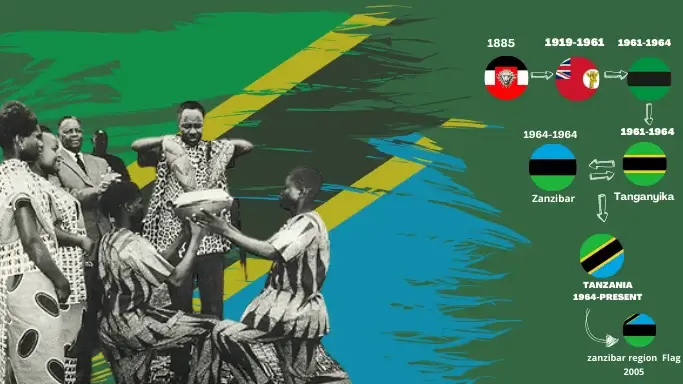Introduction: The National Pride of Tanzania
The Tanzania flag features green for agriculture and natural vegetation, black for the people, blue for the country’s water bodies, and yellow for its mineral wealth. The diagonal design symbolizes unity and forward movement.These elements combine to form a visually striking and deeply meaningful national symbol.
But the story of the Tanzania flag extends far beyond its appearance. It is a banner woven with the country’s cultural identity, historical struggles, and unshakable hopes for the future. For over 67 million Tanzanians, this flag is not just a piece of cloth, it is a declaration of sovereignty, a tribute to resilience, and a celebration of unity across more than 120 ethnic groups. Introduced in 1964 at a pivotal moment in the nation’s history, the flag marks the union of Tanganyika and Zanzibar and embodies a powerful message: that a diverse people can rise together under one vision.
Every stripe and shade holds a message from the land, the waters, the people, and the resources that sustain the republic. Understanding the Tanzania flag and the meaning behind the Tanzania flag colors is to grasp the essence of what it means to be Tanzanian—resilient, united, proud, and ever forward-looking.
Historical Origins of the Tanzania Flag
The Tanzania flag evolved from colonial symbols to a unified national identity. Under German rule in 1885, the flag was black, white, and red. British control replaced it with a red ensign featuring the Union Jack and a giraffe. After independence, Tanganyika and Zanzibar adopted separate flags. In 1964, they merged their colors to create the current Tanzania flag. These colors include green, black, yellow, and blue, which symbolize unity and shared heritage.
Colonial Beginnings and the First Tanzania Flag Colors under German Rule
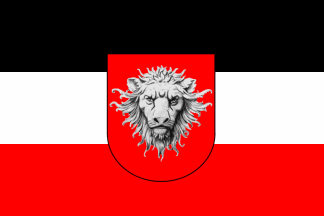
The earliest version of what would eventually become the Tanzania flag began under German colonial rule in 1885, when the territory was known as German East Africa. The flag used at the time consisted of a horizontal tricolor of black, white, and red. These colors reflected the German Empire’s palette, representing European authority rather than local culture or identity. There was no effort to incorporate native elements or values into the flag design, making it a stark symbol of colonial dominance. These early Tanzania flag colors did not represent the people or the land but instead echoed the control of a distant empire.
British Rule and the Tanzania Flag –Colors of the Red Design
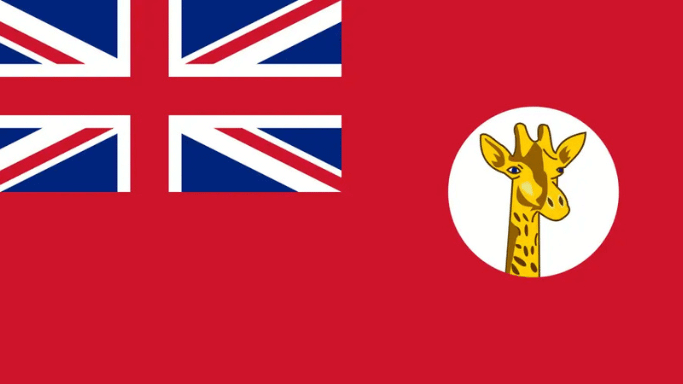
After World War I, British forces took control of the region from the Germans. The area was renamed Tanganyika and a new flag was introduced. This British-era flag was a red ensign with the Union Jack in the top left corner. On the opposite side was a circular badge featuring a giraffe, a nod to the region’s wildlife and natural beauty. While the giraffe brought a touch of local identity, the primary focus of the design still centered on British authority. The dominant red color and the inclusion of the Union Jack emphasized British rule, once again sidelining native influence. These Tanzania flag colors symbolized colonial power rather than national pride.
The Transition to Independence and the First National Tanzania Flag Colors
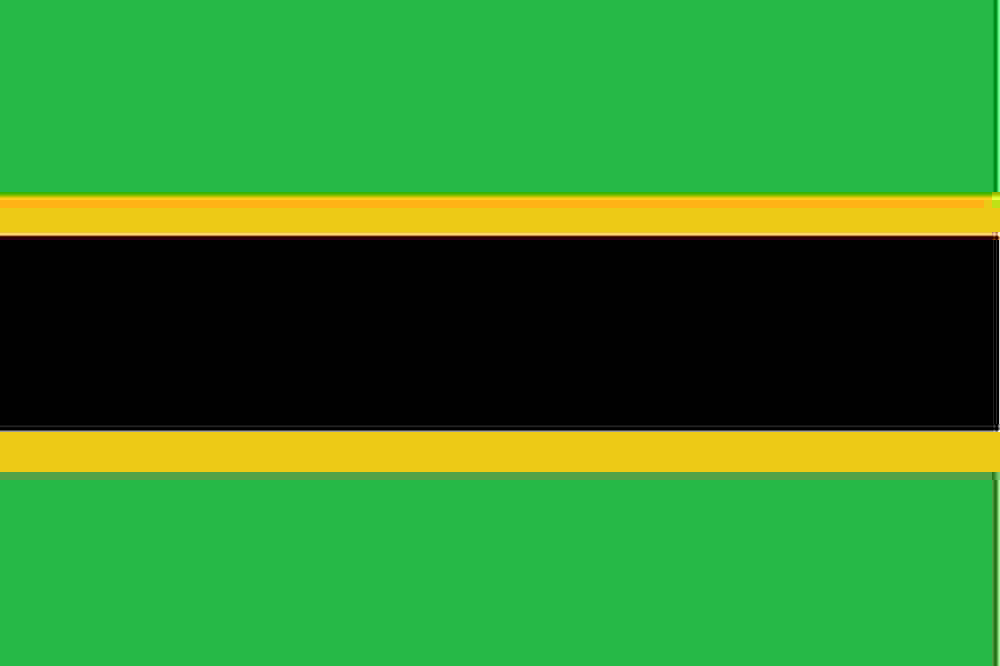
In 1961, Tanganyika gained its independence and established its own national flag for the first time. This flag featured horizontal stripes in green, black, and yellow. The green stood for the fertile land, black represented the people, and yellow symbolized the country’s mineral wealth. These Tanzania flag colors were influenced by the flag of the Tanganyika African National Union, or TANU, which was the main political party leading the independence movement in the British-controlled territory. The TANU flag consisted of green and black stripes only, without any yellow, but it laid the foundation for the national symbolism that followed. Yellow was later introduced in the national flag to represent Tanzania’s mineral resources and growing economic ambitions.
Zanzibar’s Independence and Its Role in Tanzania Flag Colors
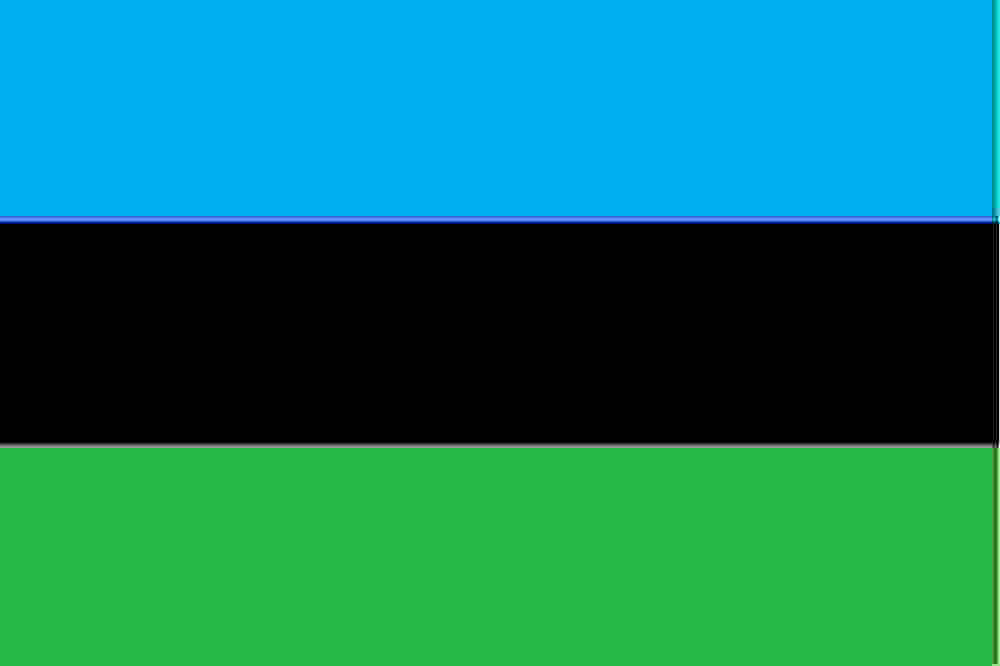
In December 1963, Zanzibar gained independence from British rule and introduced its own national flag with horizontal stripes of blue, black, and green. These colors reflected the island’s connection to the sea, African identity, and fertile land. In January 1964, the Zanzibar Revolution overthrew the Sultanate and established the People’s Republic of Zanzibar and Pemba. A Revolutionary Council led by the Afro-Shirazi Party and the Umma Party took power, removing colonial-aligned political parties and asserting full sovereignty.
The new flag adopted during this time was a powerful symbol of freedom and a break from colonial rule. Although Zanzibar’s flag existed only briefly until April 1964, its colors were not forgotten. When Tanganyika and Zanzibar united later that year, the blue and yellow from Zanzibar were merged with Tanganyika’s green and black. These four symbolic shades formed the Tanzania flag colors that proudly represent unity, independence, and shared heritage.#
The Union of Tanganyika and Zanzibar: Unifying Tanzania Flag Colors
Later in 1964, Tanganyika and Zanzibar joined to form the United Republic of Tanzania. With this union came the need for a new flag that would honor both former nations. The current Tanzania flag was created by combining elements from both Tanganyika’s and Zanzibar’s flags. It features a green triangle to represent the land, a blue triangle for the sea, a bold black diagonal band for the people, and thin yellow stripes for the country’s mineral wealth.
These unified Tanzania flag colors are deeply symbolic and represent the core identity of the new nation. The green, blue, black, and yellow are not just aesthetic choices—they express Tanzania’s rich natural resources, cultural unity, and political independence. The new flag brought together two unique histories and forged a lasting symbol of national pride.
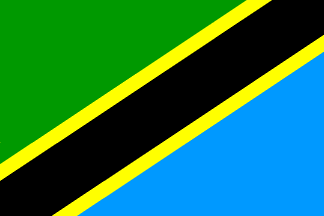
The Zanzibar regional flag
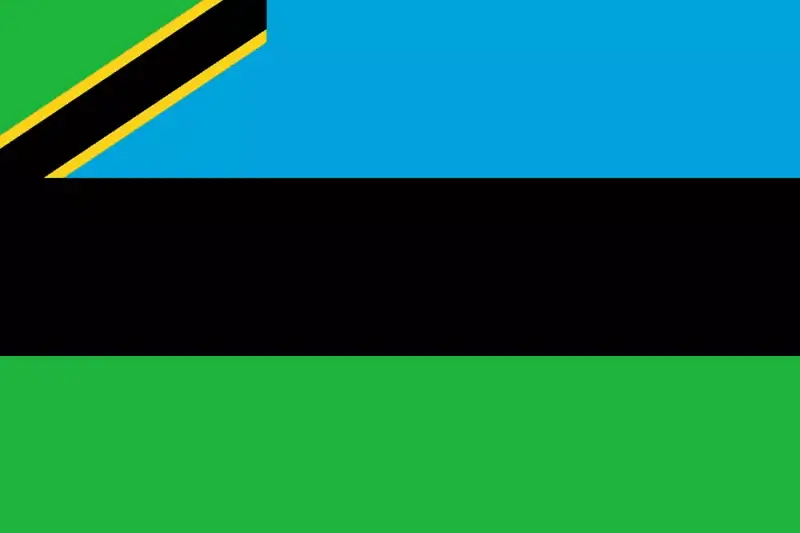
The Zanzibar regional flag was adopted in 2005 to celebrate the island’s semi-autonomous status within Tanzania. It includes three horizontal stripes in blue black and green. These colors reflect the original flag of the People’s Republic of Zanzibar and Pemba. In the top left corner is the national Tanzania flag, symbolizing the region’s integration into the United Republic of Tanzania while honoring its unique history.
Design and Geometry of the Tanzania Flag

The Tanzanian flag is divided diagonally from the lower left corner to the upper right corner. It features four distinct colors. Green fills the upper triangle, blue fills the lower triangle, and a bold black band runs across the center. This band is bordered on both sides by narrow yellow stripes. The design combines symmetry with strong symbolism. The diagonal layout suggests continuous progress and movement. Each color represents a vital part of the nation, including its people, natural resources, fertile land, and abundant waters.
Symbolism Behind the Tanzania Flag Colors
Each of the Tanzania flag colors carries a powerful meaning rooted in the country’s natural wealth, people, and national values:
- Yellow highlights Tanzania’s mineral wealth, expressing both the country’s prosperity and its future potential.
- Green symbolizes the lush vegetation and fertile agricultural land that sustains Tanzania and supports its economy.
- Blue represents the Indian Ocean, as well as the lakes and rivers that are vital to Tanzania’s water resources, transportation, and daily life.
- Black stands for the people of Tanzania, emphasizing unity, identity, and the strength of a diverse population.
One of the most powerful elements of the Tanzanian flag is its ability to unify a country that is home to more than 120 ethnic groups and dozens of languages. The black band represents not just a racial or ethnic identity, but the solidarity of all Tanzanians, regardless of tribe or religion. The flag is a constant reminder that despite cultural differences, Tanzanians are one people, working toward a common national goal. During national holidays, elections, or public celebrations, the flag serves as a shared emblem of pride and patriotism.
Evolution and Endurance of the Tanzania Flag
Although the national flag of Tanzania has remained visually unchanged since its official adoption in 1964, its symbolic significance has steadily grown through the decades. The flag’s original diagonal design and four distinct colors including green, black, yellow and blue have remained constant even as the nation has experienced political, economic and social transformation. It serves as a steady and unshaken emblem of unity and national pride.
In 2005 Zanzibar introduced its own regional flag to recognize its semi autonomous status within the United Republic of Tanzania. This regional flag revived the blue black and green horizontal tricolor once used by the People’s Republic of Zanzibar and Pemba. The updated version added the national flag of Tanzania in the top left corner. This fusion symbolized Zanzibar’s distinct identity while affirming its allegiance and integration into the larger union of Tanzania.
Across the country the national flag is widely displayed in government institutions, schools, military bases and during national celebrations. It is also seen in arts, fashion, music and popular culture. Its continued presence and unchanging design reflect its effectiveness in conveying Tanzanian values such as peace, equality and unity. Any discussion about changing the flag’s design is taken with deep seriousness, reflecting the emotional and historical importance it holds for the people. The Tanzania flag stands as a timeless representation of the spirit and strength of the nation.

How is the Tanzania flag used?
1. In national ceremonies and daily life.
The Tanzania flag plays a central role in national life and civic rituals. It is prominently displayed on public buildings, in schools, during sports events, and on key national holidays such as Independence Day and Union Day. Citizens are expected to stand still when the flag is being raised, a moment often accompanied by the national anthem. In schools, students recite pledges beneath the flag, while government institutions hoist it daily to signify official authority and unity. The Tanzania flag is a constant symbol of national pride and respect in both everyday life and formal ceremonies.
2. Sports and Global Forums
In international sports, cultural pageants, and diplomacy, the Tanzania flag becomes a beacon of national pride.Athletes proudly carry it during opening ceremonies and wave it after victories. Tanzanian competitors at global events like the Olympics and the East African Games showcase the flag as a powerful visual of their national identity. Similarly, during international beauty pageants such as Miss World Tanzania, contestants are often seen draped in or presenting the flag, symbolizing grace, national pride, and cultural heritage on a global platform. The flag is also flown at diplomatic meetings, United Nations sessions, and other forums where Tanzania asserts its sovereign presence and competitive spirit.
3. Cultural Interpretations and Folk Significance
Beyond official and political meanings, the flag has entered the realm of Tanzanian arts, music, and fashion. It often appears in kanga designs, mural paintings, and patriotic songs, reflecting its integration into the broader cultural fabric of the nation. Folk musicians and poets have praised the flag’s colors and the unity it represents, using it as a metaphor for peace, justice, and communal resilience. During village festivals and traditional ceremonies, miniature flags are waved with joy, symbolizing not just national pride but cultural rootedness.
Respect and Protocol Around the Flag
The national flag of Tanzania is treated with the highest level of dignity and reverence, reflecting its importance as a symbol of sovereignty and unity. There are well-established rules governing how the flag should be handled, raised, displayed, and cared for in both public and private settings.
- Raising and lowering the flag must be done at the correct times each day. The standard practice requires the flag to be hoisted at exactly six o’clock in the morning and taken down at six o’clock in the evening. Any deviation from this schedule, including neglecting to raise the flag or flying a damaged or faded one, is seen as a sign of disrespect and can lead to official reprimands. These rules aim to preserve the flag’s honor and maintain its symbolic role in national life.
- The flag must never touch the ground or floor, and it should never be used as a decorative cloth for tables, draped over platforms, or altered in any form. It is not allowed to be used in advertising or manufactured into products such as clothing, rugs, or any items that diminish its value. Writing or symbols must never be printed on the flag itself.
- When the flag is raised or lowered, people nearby are expected to stop, stand upright, and show respect. If the national anthem is played during the ceremony, all individuals should remain still with their right hand over their heart. Hats should be removed during this moment, and those in uniform are expected to salute according to official procedures.
- In official ceremonies, schools, and government institutions, the flag must be handled with great care. It should be properly folded, stored, and only displayed in a clean and untattered condition. Schools often teach children how to fold the flag correctly and ensure it is never displayed upside down or in a disrespectful orientation.
- When displayed with other national or institutional flags, the Tanzania flag must always occupy the position of honor. It should be placed on the tallest flagpole or the far right from the viewer’s perspective. It should not be overshadowed or placed beneath another flag under any circumstance.
- During periods of national mourning, the flag may be flown at half-mast, but only with official authorization. When doing so, the flag must first be raised to the top of the pole and then lowered to the halfway point. Before lowering it for the day, it should again be raised to the top and then taken down respectfully.
- A flag that has become worn or damaged should not be thrown away casually. Instead, it should be retired in a respectful manner, preferably by burning, to symbolize the end of its service in a dignified way.
Through these practices, Tanzania ensures that its national flag continues to be treated not just as a piece of cloth, but as a living symbol of pride, unity, and national honor.
International Comparisons and Uniqueness
The Tanzania flag is internationally recognized for its distinctive diagonal design and bold, meaningful colors. Unlike many African flags that feature the common pan-African palette of green, yellow, red, and black, Tanzania adds blue to reflect its coastal geography and abundant water bodies. This unique blend of green for land, black for the people, yellow for mineral wealth, and blue for water creates a vivid national identity. Experts in flag design known as vexillologists often praise the Tanzania flag for its clarity, symbolism, and balance, making it one of the most visually striking and culturally significant flags on the African continent.
Tanzania’s Flag and the Next Generation
The younger generation in Tanzania continues to embrace the flag with enthusiasm and respect. In schools, sports, arts, and online platforms, young people proudly display the flag, incorporating it into digital avatars, fashion, and music videos. This generational pride ensures that the flag remains a living symbol—not just a historical artifact. Educational programs and national campaigns often utilize the flag to encourage civic engagement and national pride among youth.
Conclusion
The Tanzania flag is far more than a national emblem. It is a living symbol of the country’s soul, representing the unity of its people, the richness of its land, and the journey from colonial rule to independence. Its colors reflect stories of struggle, hope, and pride, while its design connects the past with the future. Whether displayed at global events or local celebrations, the Tanzania flag continues to embody national identity and inspire generations with its message of unity, resilience, and progress.

